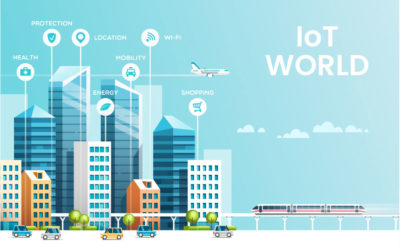Unleashing IoT miracles in Asset Tracking
Asset tracking is one of the most promising application areas of IoT. With regards to a study by Mobile Experts, the asset tracking IoT device market will go from 22 million to 70 million devices by 2022. And the beneficiaries are in their numbers – healthcare, transportation, agriculture, retail, industrial and consumer markets.
Asset tracking deals with the tracking of your company’s physical assets and information. With regards to the kind of business you run, physical assets could mean anything from equipment, vehicle or tools, IT devices, etc.
For the smooth running of operations, companies are now using dedicated asset management solutions. It allows employees to access asset information with ease and also update it. These asset tracking solutions also allows companies to track and troubleshoot problems arising in the connected devices without even letting the end customer knowing it.
To implement such a solution means the company’s assets are tagged using NFC tags, QR codes, barcodes, etc, with the help of software. Or simply, by connecting all the devices to a web based IoT portal where all your device’s information will be managed and troubleshoot. You can scan the asset tags using mobile devices. They’re the links between information in the database and the physical items. However, you can also use an established web portal to manage all your devices.
Read also: Building an IoT platform or choosing the Suitable Platform? What is the best Choice?
But for this to come to light, the IoT industry will need legions of smart and skilled professionals. This group of individuals has already set the ball rolling in this sphere of endeavor.
The fact remains that IoT takes typical asset management software to a new height such that connected devices can send information status without any help from employees. Again, for efficiency to be incorporated into this process, these prodigies will pull strings once again.
Turning an ordinary asset into an IoT device using a sensor may seem like a perfect example of the capabilities of these IoT professionals. The sensor will send out information as regards asset’s status like location and malfunctioning to the central system. This is not a piece of cake. With the wrong people at the helm, you can quickly run into murky waters by compounding an already bad situation.
The world is yet to see what the prodigies of IoT in asset tracking will bring to the table. Having young IoT-trained professionals take up the mantle of leader in asset tracking means innovation and efficiency are brought to bear.
The IoT Prodigies of the Future
IoT prodigies will possess foundational instrumentation, tracking and monitoring skills, and ability to manage information that revolves around asset reliability. It also entails electrical skills to implement new wireless transmitters and enhance technology.
Again, such skills like networking, subnet masks, IP addressing and cellular are critical IoT needs.
Asset-intensive sectors like logistics, manufacturing or utilities face problems like delayed product deliveries, loss of goods, and inventory theft. All of these can be a thing of the past with innovation from IoT prodigies.
With innovations in these sectors, business owners can locate, track, and monitor products and assess them – even also for the remote assets in real-time.
You may also like: How IoT is Redefining the Telecommunication Industry
More so, they will be able to securely track real-time location and product status from the manufacturing unit and the entire step involved in the supply chain until it gets to the customer
IoT Asset Tracking Solutions
Manufacturing Units
For large-scale manufacturing units, it is a common occurrence for pick-up trucks to traverse the length and breadth of the warehouse to collect inventory and move to the dispatch point. By no means is this an easy feat – retrieval system is time-consuming and exhaustive. This will lead to high ITAT and longer supply time.
IoT prodigies bring in their array of skills to ensure optimized ITAT for fast retrieval of goods. It will allow business owners to track the current location and the condition of the product in the supply chain.
There are several issues associated with manufacturing units that feature multiple production lines. Manual dependency to check finished goods throws in yet another problem of high overheads and higher error in percentage.
Again, IoT professionals can help manufacturers check packaging issues to a large extent. They will leverage advance Deep learning for object characterization and classification using the devices, cameras, and cloud infrastructure at their disposal to check every point in the pelletizer line.
Manufacturers will have a 360-degree view of every product, checking all attribute like position, seal, label, and quantity. With the help of predictive analysis, manufacturers can take corrective actions. Take for an instance; if the system figures out any drawbacks in content/labeling/packaging, an alert will go out to put aside the faulty product item for further examination.
Moreover, an IoT web based portal can be build that will allow for real-time tracking of all the devices connected to the portal and these devices can be tracked down immediately if any malfunctioning arises. Not only this, you can handle and troubleshoot these errors on cloud without even your customer knowing of it. How amazing would that be?
Fleet Tracking & Management
Logistics or supply chain companies owning large fleets of vehicles across different states or countries face the challenges that involve tracking the entire fleet line. Companies often face problems like poor driver performance, vehicle breakdowns, product thefts or losses, among many others.
But this can be nipped in the bud when IoT professionals put their skills to work in the logistics and supply chain sector for those with large fleets of vehicle across different countries and states. These companies are challenged with tracking every single vehicle in their fleet line.
With the help of IoT prodigies, these companies can track every single vehicle from anywhere at any point in time. With this solution, they can monitor real-time location and condition of the vehicle and the driver performance.
Using the driving pattern or even vehicle condition, fleet owners can have a clearer understanding of the existing conditions. This will allow them to make adjustments and prevent accidents or vehicle breakdowns.
Conclusion
In this day and age, the Internet of Things is a big deal, and asset tracking is a critical part of it. IoT prodigies have their work cut out. They’re at the forefront of asset management, redefining processes, and leading the way in innovative practices.
With that said, IoT is on the verge of creating simpler solutions for businesses and the world at large.



